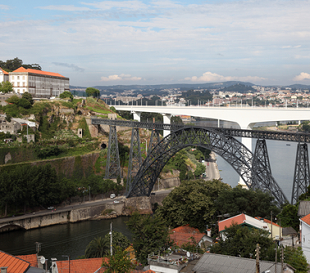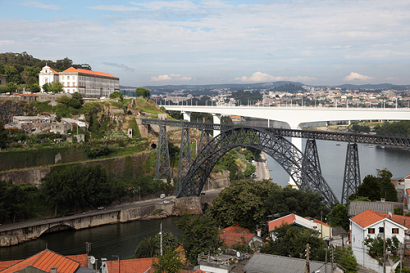
The Maria Pia Bridge in Lisbon – Gustave Eiffels’ lasting legacy to Portugal
Gustave Eiffel may have become enduringly famous for a rather large tower he designed in Paris, but there are many other important constructions dotted around Europe that bare the mark of the highly innovative and venerated French architect.
Another great yet somehow less illustrious Gustave Eiffel creation can be found in the city of Lisbon in northern Portugal and is known as the Maria Pia Bridge. At the time Eiffel designed this pioneering structure, in 1877, it was the biggest single arch span in the world, and was used as a railway bridge to carry passengers and goods from northern Portugal to Galicia, over the fast flowing River Douro.
Four companies put in bids to construct the Maria Pia and Eiffel’s bid was the cheapest by some distance, a strategy that secured Eiffel and his associates the contract.
The bridge is over 1,000ft long, 140ft high and has a central width span of 520ft. Previous to the Maria Pia, the biggest single span bridge was in America, at St Louis, which passed almightily over the Mississippi River with a centre span of 512ft. Portugal’s Maria Pia however, knocked its American rival into immediate architectural inferiority, by superseding the Mississippi bridge by eight feet of so, becoming the world’s largest single span bridge.
New and innovative methods were used to construct the Maria Pia Bridge, techniques which were then used on other bridges, such as the Garrabit Viaduct in central France.
This mighty Lisbon landmark has been referred to as being, “A graceful filigreed structure of wrought iron.” In 1988 at video was taken of the Maria Pia of a heavily loaded freight train passing over the bridge, a nostalgic reminder at just how long and useful a life this bridge had.
There was talk about this old bridge being demolished when the new one came into service in 1991, but, for now at least, the Maria Pia stands proud and beautiful, a pensive legacy of the many discerning talents of Gustave Eiffel and his team.



